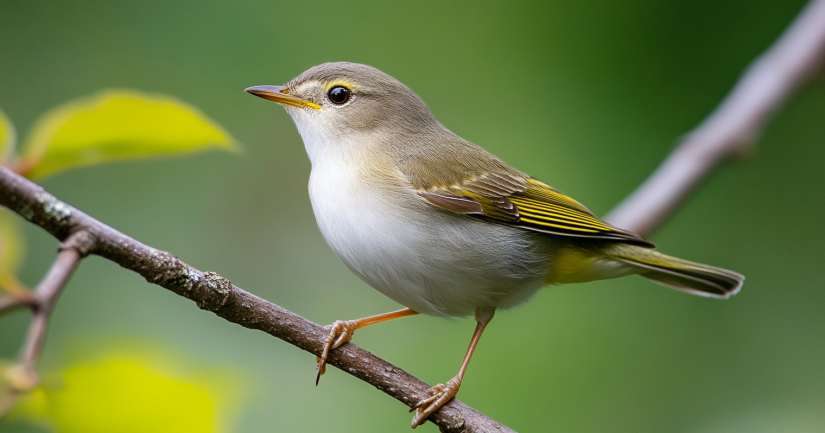
Dive into our Warbler Quiz, How Well Can You Identify These Lively Songbirds? Warblers are small, energetic birds known for their rapid movements and musical songs. This Warbler Quiz will challenge your ability to recognize these colorful songbirds by their calls, plumage, and behavior. Found across forests, wetlands, and grasslands, warblers play a vital role in ecosystems by controlling insect populations.
Warblers belong to the Parulidae family in North America and the Sylviidae family in Europe and Asia. These tiny birds are often difficult to spot due to their fast, fluttering movements among tree branches. Some species, like the Yellow Warbler, stand out with bright plumage, while others rely on camouflage to blend into their surroundings.
Warblers are delightful, but there’s more to discover! Check out the powerful vulture in the Vulture Quiz or the bold turkey in the Turkey Quiz.
Uncover the Answer – Start the Warbler Quiz Today
What Makes Warblers Unique? Key Facts for the Warbler Quiz
One of their most remarkable traits is their diverse vocal abilities. Each species has a distinct song, used to attract mates and defend territories. Birdwatchers rely on these songs to identify warblers, as many species look similar but sound completely different.
Where Do Warblers Live? Understanding Their Habitat and Migration
Warblers thrive in forests, marshes, and shrublands, where they forage for insects and caterpillars. Some species, like the Common Yellowthroat, prefer wetlands, while others, like the Black-throated Blue Warbler, favor dense woodlands. Their adaptability allows them to occupy a wide range of environments.
Many warblers are long-distance migrants, traveling thousands of miles between breeding and wintering grounds. The Blackpoll Warbler completes one of the longest migrations of any songbird, flying nonstop for days over the Atlantic Ocean. These journeys require precise navigation and immense endurance.
Why Are Warblers Important to Ecosystems?
Warblers play a key role in controlling insect populations. Their diet consists of flies, beetles, spiders, and caterpillars, making them essential for natural pest control. During migration, they also help pollinate flowers by feeding on nectar and spreading pollen.
Their presence in an area often signals a healthy environment. Since they rely on diverse plant life and insect populations, a thriving warbler population indicates a balanced ecosystem. Conservationists study warblers to monitor environmental changes.
Are Warblers in Danger? Conservation and Challenges
Despite their resilience, many warbler species face threats from habitat destruction, climate change, and window collisions. Deforestation reduces breeding and wintering grounds, while urban expansion creates dangerous migration obstacles.
Conservationists focus on:
- Protecting forests and wetlands to preserve warbler habitats
- Reducing light pollution to prevent disorientation during migration
- Encouraging native plant growth to provide food sources
Simple efforts, like planting native trees and keeping outdoor lights dim, help support warbler populations.
Are You Ready to Take the Warbler Quiz?
Now that you’ve explored the migration, songs, and survival skills of warblers, it’s time to put your knowledge to the test! This Warbler Quiz will challenge you with fascinating questions about these quick-moving songbirds. Can you identify them by their songs and markings? Start the quiz now and find out!
Check out our FULL collection of Bird Quizzes!
Warbler – FAQ
A warbler is a small songbird belonging to the family Parulidae. These birds are typically found in North America and are known for their vibrant colors and melodious songs. Warblers are often seen in wooded areas, where they forage for insects and berries.
Warblers are generally small in size, with most species measuring between 4 to 6 inches in length. They possess slender bodies, long wings, and short tails. Their plumage can vary significantly among species, with some displaying vibrant yellow, green, or blue feathers. Additionally, warblers are known for their distinctive songs, which they use to communicate and establish territory.
Warblers inhabit a wide range of environments, including forests, shrubby areas, and wetlands. Many species migrate seasonally, traveling thousands of miles between breeding grounds in North America and wintering habitats in Central America or the southern United States. During migration, warblers may be spotted in various habitats, including gardens and parks.
Warblers primarily feed on insects, such as beetles, caterpillars, and spiders, making them important for pest control in their ecosystems. During the fall and winter, they may also consume fruits and berries, which provide necessary energy reserves for migration.
To attract warblers, create a welcoming habitat by planting native trees and shrubs that provide cover and food. Offering bird feeders filled with seeds and suet can also help. Consider adding water features, such as birdbaths, to provide drinking and bathing opportunities. Additionally, maintaining a natural, less manicured landscape will encourage these beautiful birds to visit.
